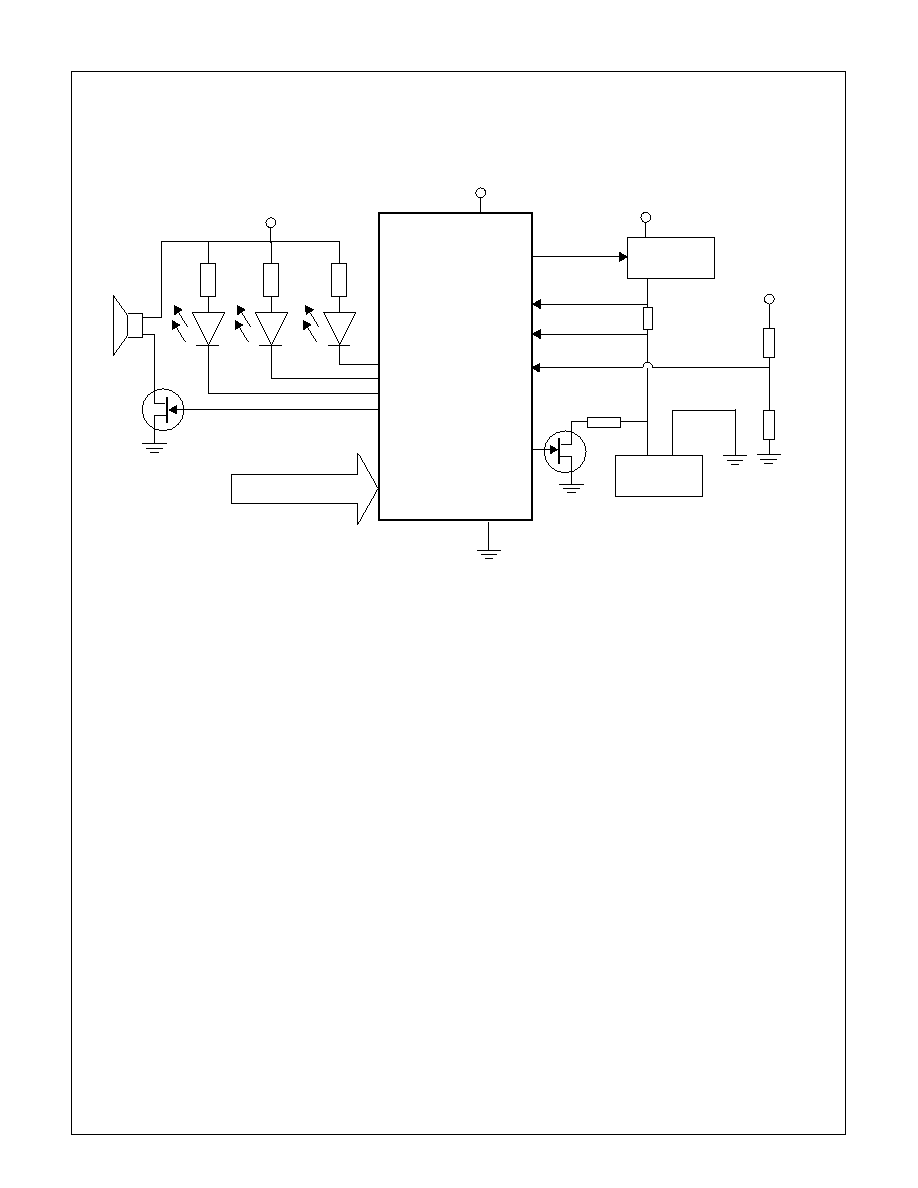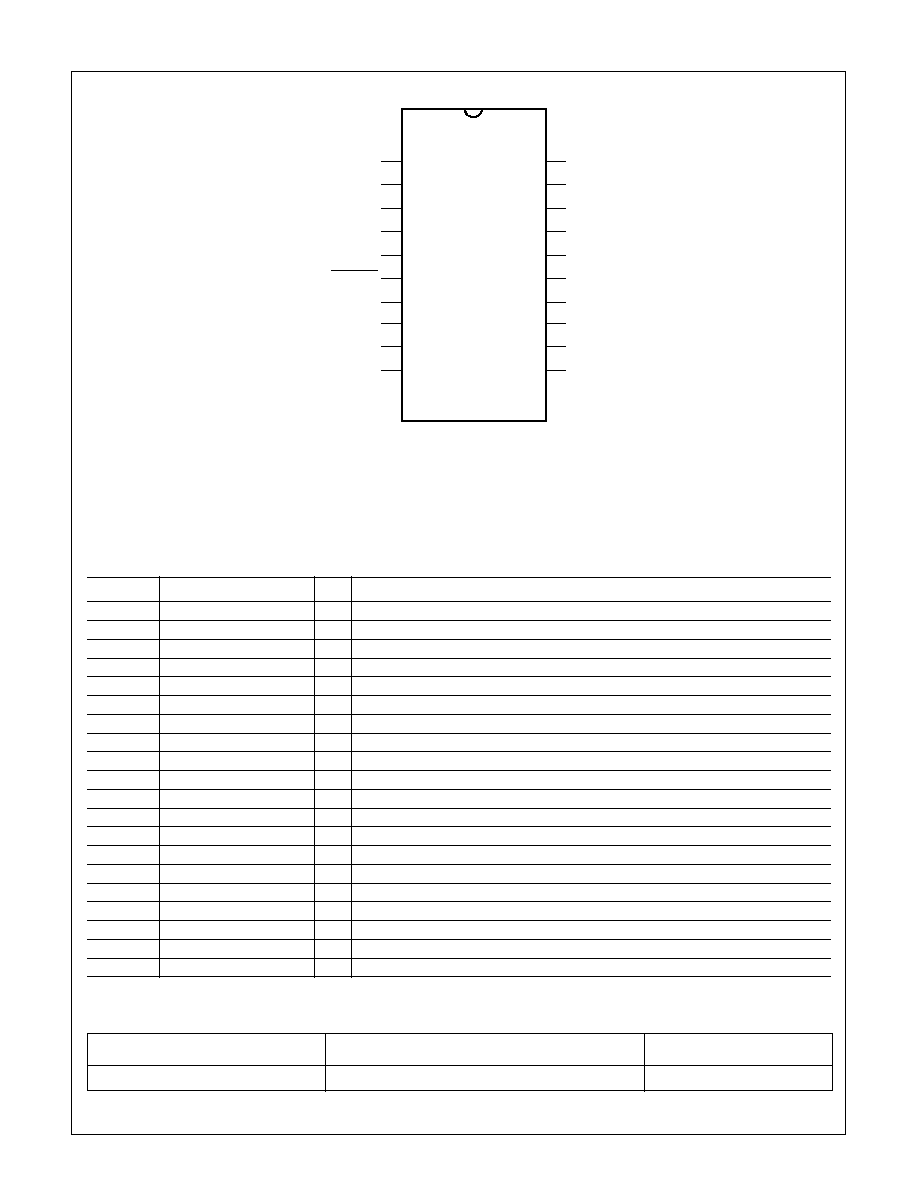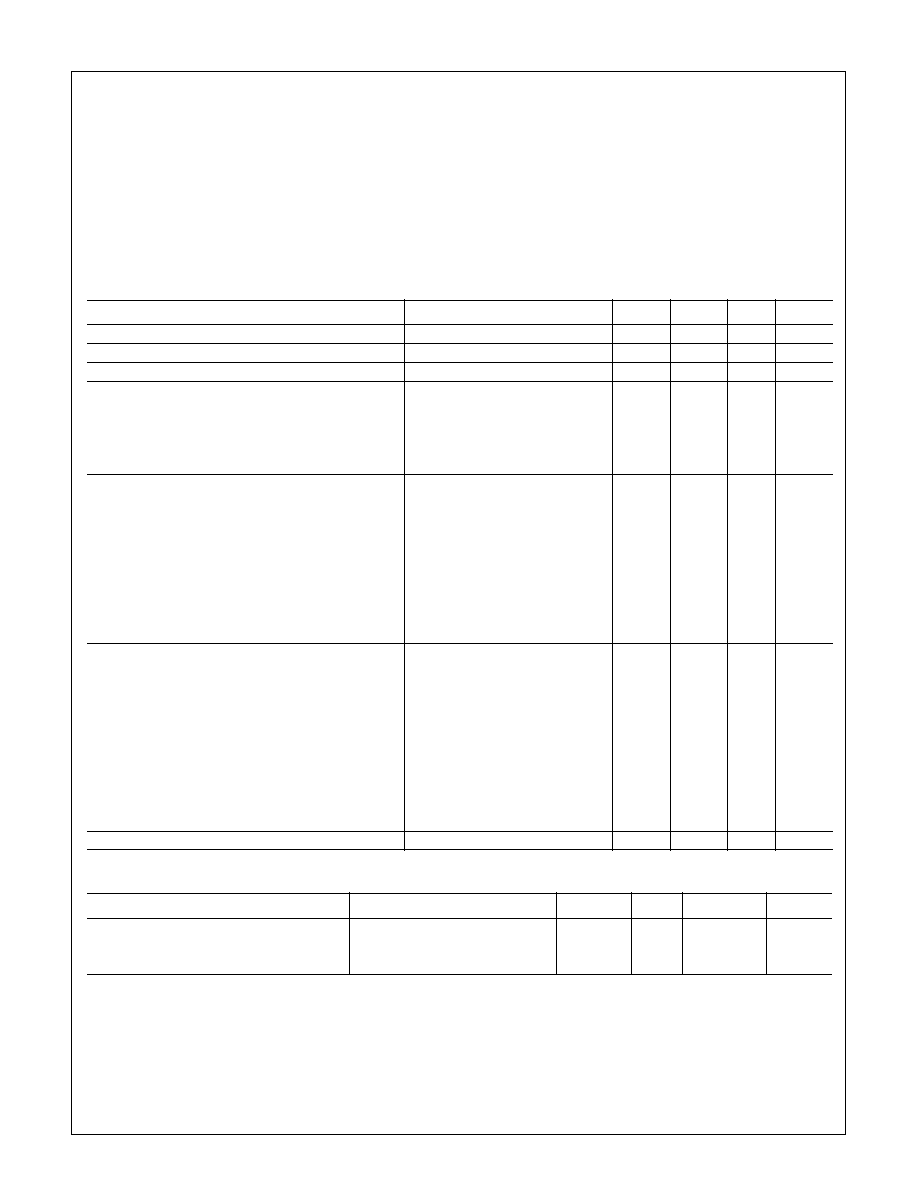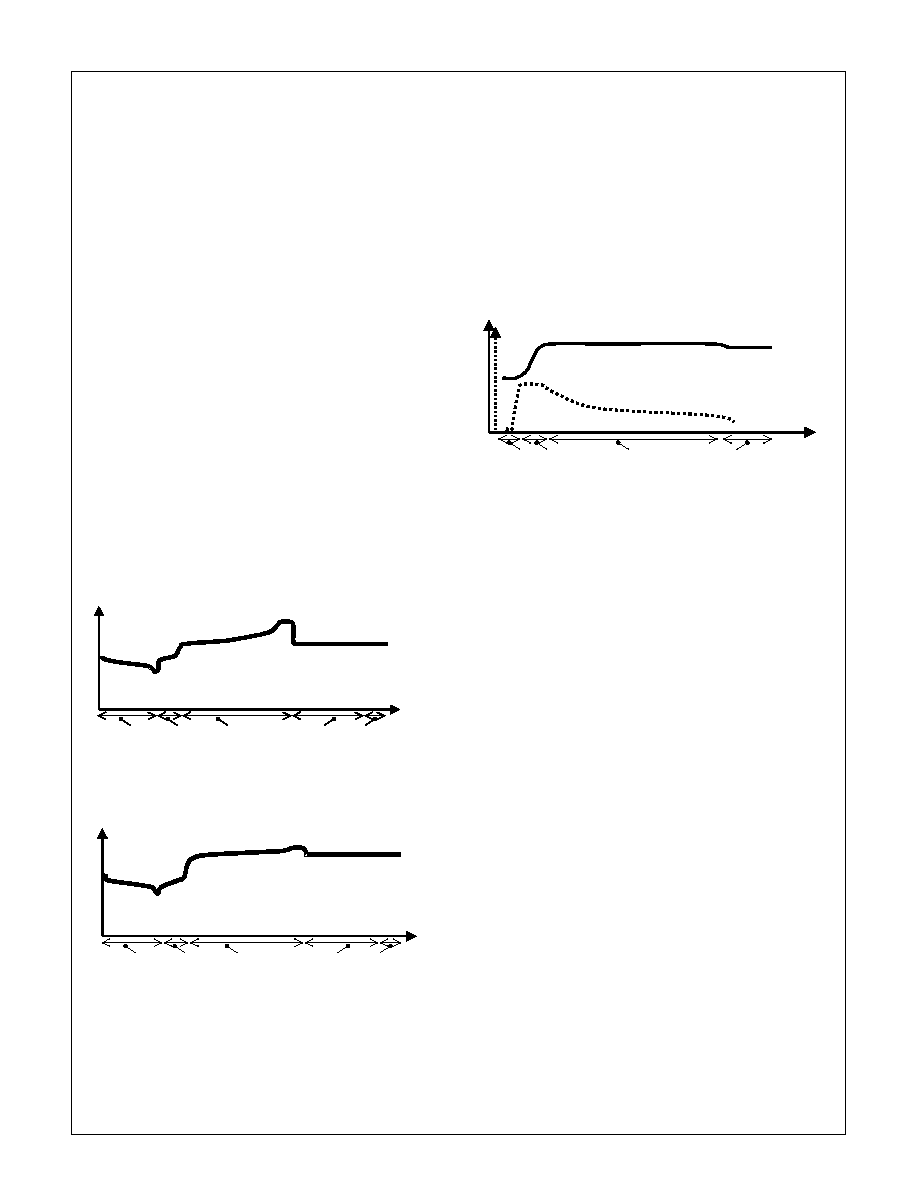 | –≠–ª–µ–∫—Ç—Ä–æ–Ω–Ω—ã–π –∫–æ–º–ø–æ–Ω–µ–Ω—Ç: LM3647IM | –°–∫–∞—á–∞—Ç—å:  PDF PDF  ZIP ZIP |

LM3647 Univer
sal Batter
y Char
g
er f
or Li-Ion, Ni-MH and Ni-Cd Batteries
©2000 National Semiconductor Corporation
www.national.com
LM3647
Universal Battery Charger
for Li-Ion, Ni-MH and Ni-Cd Batteries
1.0 General Description
The LM3647 is a charge controller for Lithium-Ion (Li-Ion),
Nickel-Metal Hydride (Ni-MH) and Nickel-Cadmium (Ni-
Cd) batteries. The device can use either a pulsed-current
charging or a constant-current charging technique. The
device can also be configured to discharge before charg-
ing. Throughout the charging sequence the LM3647 mon-
itors voltage and/or temperature and time in order to
terminate charging.
s
Negative delta voltage (-
V)
s
Maximum voltage
s
Optional: Delta temperature/delta time (
T/
t)
s
Optional: Maximum temperature
s
Backup: Maximum time
If both voltage and temperature fail to trigger the termina-
tion requirements, then the maximum time (configured by
external hardware) steps in which terminates the charging.
In Ni-Cd/Ni-MH mode, four different charging stages are
used:
s
Soft-start charge
s
Fast charge
s
Topping charge
s
Maintenance charge
In Li-Ion mode, four different charging stages are used:
s
Qualification
s
Fast Charge Phase 1, Constant Current
s
Fast Charge phase 2, Constant Voltage
s
Maintenance charge
The charge current of the LM3647 is configured via exter-
nal resistors, which in turn controls the duty cycle of the
PWM switching control output. For cost-sensitive applica-
tions, the LM3647 charge controller can be configured
without a temperature sensor and to use an external cur-
rent source.
PRELIMINARY
March 2000
When using an external current source, the current is con-
trolled by the LM3647 which turns the current source on
and off. The LM3647 automatically detects the presence of
a battery and starts the charging procedure when the bat-
tery is installed. Whenever an error occurs (e.g., short cir-
cuit, temperature too high, temperature too low, bad
battery, charge time over, etc.) the LM3647 will stay in error
mode until the battery is removed or it gets within the al-
lowed charging temperature range. The LM3647 is avail-
able in a standard 20-lead SOIC surface mount package.
Key Features
s
Auto-adaptive fast charge
s
High-resolution, accurate voltage monitoring prevents
Li-Ion undercharge or overcharge
s
Fast charge, pre-charge and maintenance currents are
provided. Different currents are selectable via external
resistors.
s
Fast-charge termination by
temperature/
time, maxi-
mum voltage, maximum temperature, negative
volt-
age and maximum time
s
Dynamically detects battery insertion, removal, short
circuit and bad battery without additional hardware
s
Supports charging of battery packs with 2-8 cells of Ni-
Cd/Ni-MH or 1-4 cells of Li-Ion
s
Three LED indicators and Buzzer output indicate oper-
ational modes
s
Ni-MH/Ni-Cd charge mode, Li-Ion charge mode or dis-
charge mode can be selected manually
s
PWM switching controller
Applications
s
Battery charging systems for:
-- Portable consumer electronics
-- Audio/video equipment
-- Communications equipment
-- Point of sale devices
-- Power tools
-- Personal convenience products

2
www.national.com
Typical Application
RCIN
SEL1 ... SEL4
DISCHG
PMW
CS
CEL
TEMP
LED1
LED2
LED3
BUZZER
LM3647
BATTERY
CONTROL
CURRENT
VOLTAGE
TEMPERATURE
POWER
UNREGULATED
DC VOLTAGE (MAX 20V)
CONFIGURATIONS
Vcc
Vcc
Vcc
NTC
Current
Source
Resistor

3
www.national.com
2. Connection Diagram
2.1 Pin Descriptions
2.2 Ordering Information
Pin No.
Name
I/O
Description
1
SEL3
I
Input to select charge mode: high = pulse, low = constant
2
SEL4
I
Input to select maintenance time out, connected to an RC-network
3
RCIN
RC-timing pin
4
GND
Ground
5
Vcc
5V, power supply
6
RESET
I
Reset pin, active low
7
LED1
O
LED output
8
LED2
O
LED output
9
LED3
O
LED output
10
VREF
I
Voltage reference analog input
11
CEXT
External Capacitor
12
CEL
I
Battery voltage input (through resistor divider)
13
CS
I
Current sense input
14
TEMP
I
NTC-temperature sensor input
15
DISCHG
O
High when discharging, else low
16
SYSOK
O
System Monitor Output
17
BUZZER
O
Buzzer output
18
PWM
O
PWM-output filtered to a DC-level (controls the current)
19
SEL1
I
Tri-level input, used to select charge type
20
SEL2
I
Tri-level input, used to select NiCd, NiMH, Li-Ion
Device
Package
Temperature
LM3647IM
20 SOIC
-40∞C to +85∞C
RESET
TEMP
CS
CEL
CEXT
BUZZER
DISCHG
SEL2
SEL1
PWM
20-PIN
SOIC
SEL3
SEL4
RCIN
GND
V
CC
LED1
LED2
LED3
Top View
1
2
3
4
5
6
7
8
9
10
20
19
18
17
16
15
14
13
12
11
V
REF
SYSOK
Order Number LM3647IM
NS Package Number M20B

4
www.national.com
3.0 Electrical Characteristics
Absolute Maximum Ratings
Note: If Military/Aerospace specified devices are required
please contact the National Semiconductor Sales Office/Dis-
tributors for availability and specifications.
Note: Absolute maximum ratings indicate limits beyond
which damage to the device may occur. DC and AC electrical
specifications are not ensured when operating the device at
absolute maximum ratings.
DC Electrical Characteristics:
-40∞C
T
A
+85∞C unless otherwise specified
AC Electrical Characteristics
Supply Voltage (V
CC
)
7V
Voltage at Any Pin
≠0.3V to V
CC
+ 0.3V
Total Current into V
CC
Pin (Source)
100 mA
Total Current out of GND Pin (Sink)
110 mA
Storage Temperature Range
≠65∞C to +140∞C
Parameter
Conditions
Min
Typ
Max
Units
Operating Voltage
4.5
5.5
V
Supply Current
2.5
mA
LED-pin Sink Current
7.5
15
mA
Temperature Input Levels
Ni-Cd / Ni-MH Upper limit
(Voltage at TEMP-pin)
3.15
V
Li-Ion Upper limit
(Voltage at TEMP-pin)
3.0
V
Lower Limit
(Voltage at TEMP-pin)
0.5
V
Start limit
(Voltage at TEMP-pin)
2.2
V
Li-Ion (for both 4.1 and 4.2V Cells)
Maintenance Charge Minimum Voltage
(CEL pin)
2.6
V
Maintenance Charge Restart Voltage
(CEL pin)
2.153
V
Good Battery Threshold
(CEL pin)
1.2
V
Maintenance Current
(Voltage at CS-pin)
2.3
V
Maintenance Current Lower Threshold
(Voltage at CS-pin)
2.42
V
Minimum Current Fast Charge Termination
(Voltage at CS-pin)
2.3
V
Qualification Current
(Voltage at CS-pin)
2.3
V
Maximum Charging Current
(Voltage at CS-pin)
1.5
V
Ni-Cd/Ni-MH
Maximum Battery Voltage
(CEL pin)
3.017
V
Maximum Battery Current
(Voltage at CS-pin)
1.5
V
Battery Presence Limit
(CEL pin)
1.0
V
Discharged Battery Limit
(CEL pin)
1.7
V
Good Battery Threshold
(CEL pin)
1.2
V
Soft Start Current
(Voltage at CS-pin)
2.3
V
Topping Charge Current
(Voltage at CS-pin)
2.3
V
Maintenance Charge Current
(Voltage at CS-pin)
2.425
2.45
V
V
REF
2.5
V
Parameter
Conditions
Min
Typ
Max
Units
RCIN frequency
R = 3.3k
, C = 68pF
2.5
MHz
Fast-PWM frequency
250
Hz
Slow-PWM frequency
0.1
Hz

5
www.national.com
4.0 Functional Description
4.1 General
The LM3647 can be configured to charge three different
types of batteries: Ni-Cd, Ni-MH and Li-Ion. The charger be-
havior for Ni-Cd and Ni-MH is similar but the charge curves
will appear slightly different due to the differences in chemis-
try. The Ni-Cd/Ni-MH charging algorithm is divided into four
phases:
Soft Start: The LM3647 detects that a battery is connected
and verifies that the temperature is within limit.
Charging starts with a current of 0.2C and switch-
es into next phase on timeout. Error termination
will be triggered by Maximum Battery Voltage
(CEL-pin > 3.017V) or if the battery voltage never
reaches the Defective Battery Level (CEL-pin <
1.2V).
Fast Charge: Constant current is applied to the battery and
the LM3647 monitors voltage and temperature
(optional). Switch into next phase will appear as a
voltage drop in the charging curve: (Ni-Cd ~
50mV/cell) and (Ni-MH ~ 17mV/cell). Error termi-
nation will be triggered by over-temperature.
Topping Charge: A current of 0.2C is applied to the battery
for a user defined time (RC network at SEL4)
Maintenance Charge: Is user selectable and is a fixed per-
centage of the Fast Charge rate.
Discharge before charge is user selectable.
Ni-Cd Charging Curve:
Ni-MH Charging Curve:
The Li-Ion charging algorithm is also divided into four phas-
es:
s
Qualification: The LM3647 detects that a battery is con-
nected and verifies that the temperature (optional but
highly recommended for safety reasons) is within limit.
Charging starts with a current of 0.2C and switches into
next phase on timeout (~ 1 minute). Error termination will
be triggered if the battery voltage does not reach the Li-
Ion Battery Qualification Level (CEL-pin < 1.2V) within
one minute.
s
Fast Charge Constant Current: Battery voltage will rise
until Maximum Battery Voltage (CEL-pin = 2.675V or
2.74V depending on SEL3) is reached.
s
Fast Charge Constant Voltage: Keeps the voltage con-
stant until the current has decreased below the threshold
(CS at 2.3V).
s
Maintenance Charge: Is user selectable and is a fixed
percentage of the Fast Charge rate.
4.2 Advanced Pin Descriptions
SEL1 is a selection pin to set the LM3647 in different charge
behavior. The pin has three states: tied to Vcc, GND, or un-
connected (Hi-Z). When the charger is configured to charge
Ni-Cd or Ni-MH batteries, this pin determines if the charger
discharges the battery before charging or if the charger shall
only maintenance charge the battery. When the charger is
configured for Li-Ion batteries, this pin determines how the
charger behaves during maintenance charge.
SEL2 is a selection pin to determine the battery type to be
charged. The pin has three states: tied to Vcc (Ni-MH), GND
(Ni-Cd), or unconnected (Li-lon).
SEL3 is a selection pin used to set charger hardware modes.
The pin has two states: tied to Vcc or GND. When configured
for Ni-Cd/Ni-MH batteries, this pin determines whether the
PWM is fast and has current feedback, or slow and has ex-
ternal current control. When configured for Li-Ion batteries,
this pin changes the regulation point for maximum voltage,
2.675V (4.1V Cell) or 2.74V (4.2V Cell).
Note: SEL3 must be hard wired to Vcc if a charger that sup-
ports both Li-Ion and Ni-Cd Ni-MH is implemented.
SEL4 is connected to a RC-network that determines the
charge time-outs. This RC-network is also connected to the
output LED1.
RCIN is a high-speed timing pin, used to drive the charger at
the right frequency connected to a RC-network.
GND is the ground pin.
Vcc is the power-supply pin. This pin should have a 100nF
capacitor tied to GND.
RESET is a reset pin.
LED1 is an active-low output used to indicate charge phase.
It is also used when measuring the charge timeout value.
Voltage
Time
Discharge
Soft Start
Fast Charge
Topping
Charge
Maintenance
Charge
Voltage
Time
Discharge
Soft Start
Fast Charge
Topping
Charge
Maintenance
Charge
Voltage
Time
Qualification
Fast Charge
Constant Current
Fast Charge
Constant Voltage
Maintenance
Charge
Current




